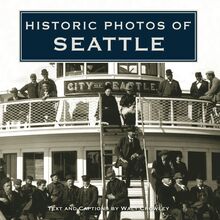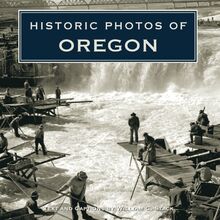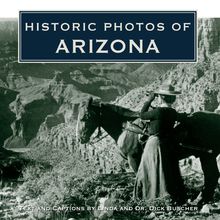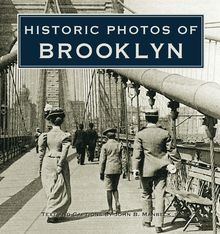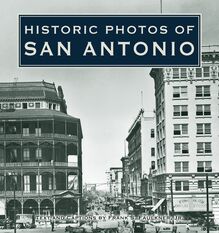Historic Photos of Franklin Delano Roosevelt , livre ebook
170
pages
English
Ebooks
2007
Vous pourrez modifier la taille du texte de cet ouvrage
Obtenez un accès à la bibliothèque pour le consulter en ligne En savoir plus
Découvre YouScribe et accède à tout notre catalogue !
Découvre YouScribe et accède à tout notre catalogue !
170
pages
English
Ebooks
2007
Vous pourrez modifier la taille du texte de cet ouvrage
Obtenez un accès à la bibliothèque pour le consulter en ligne En savoir plus
Publié par
Date de parution
01 septembre 2007
Nombre de lectures
2
EAN13
9781618586308
Langue
English
Poids de l'ouvrage
17 Mo
Franklin Delano Roosevelt followed in the footsteps of the political career blazed by his cousin (and uncle by marriage), President Theodore Roosevelt. Beginning with local politics, he went on to serve a stint in Washington, then became governor of New York, and then won the presidency. His was a charisma similar to that of TR, but derived from his Delano side. His sunny disposition carried him through many trials, including disabling paralysis. As president his was a fearsome task, with two principal thrusts—restoring hope to an America mired in the Great Depression and leading the nation to victory in the Second World War.
FDR became an American icon. The hundreds of photos in Historic Photos of Franklin Delano Roosevelt, from the collections of the FDR presidential library, portray him throughout his life and career, revealing a presidency marked by the twin struggles for economic recovery and military victory. FDR's life in pictures, published here in striking black and white, captioned and with introductions, is sure to enthrall every reader interested in the biography of this renowned American leader.
Publié par
Date de parution
01 septembre 2007
EAN13
9781618586308
Langue
English
Poids de l'ouvrage
17 Mo
HISTORIC PHOTOS OF
FRANKLIN DELANO ROOSEVELT
T EXT AND C APTIONS BY M ATTHEW G ILMORE
FDR speaking on the stump. (1930)
HISTORIC PHOTOS OF
FRANKLIN DELANO ROOSEVELT
Turner Publishing Company
200 4th Avenue North Suite 950
Nashville, Tennessee 37219
(615) 255-2665
412 Broadway P.O. Box 3101
Paducah, Kentucky 42002-3101
(270) 443-0121
www.turnerpublishing.com
Historic Photos of Franklin Delano Roosevelt
Copyright 2007 Turner Publishing Company
All rights reserved.
This book or any part thereof may not be reproduced or transmitted in any form or by any means, electronic or mechanical, including photocopying, recording, or by any information storage and retrieval system, without permission in writing from the publisher.
Library of Congress Control Number: 2007929602
ISBN-13: 978-1-59652-400-2
Printed in the United States of America
07 08 09 10 11 12 13 14-0 9 8 7 6 5 4 3 2 1
C ONTENTS
A CKNOWLEDGMENTS
P REFACE
Y OUTH (1882-1910)
P OLITICAL M AN (1911-1933)
P RESIDENT (1933-1945)
N OTES ON THE P HOTOGRAPHS
Formal portrait of FDR, Eleanor, and their two children, Anna and baby son James. FDR had left Columbia University Law School without a degree and joined the Carter, Ledyard Milburn firm. His mother, Sara, gave them a new Charles A. Platt-designed New York brownstone at 49 East 65th (she owned the adjacent number 47). (1908)
A CKNOWLEDGMENTS
This volume, Historic Photos of Franklin Delano Roosevelt , is the result of the cooperation and efforts of a number of organizations and individuals.
One cannot do research on Franklin Delano Roosevelt without acknowledging the dedicated and resourceful folks at the FDR Presidential Library, from which the photographs come.
And a word of thanks to all those scholars, editors, and memoirists of FDR who have delved into his life and career and produced insightful material.
-Matthew Gilmore
P REFACE
FDR was one of the most significant of American presidents. He came into office facing unprecedented economic crisis, for which he prescribed a New Deal. That New Deal would radically change American government and transform politics for generations. On the heels of the struggle to restore the economy came the effort to fight and win the Second World War.
The photographs published in this volume encompass the entire career of the man who would become America s 32nd president. Here we see the atmosphere of his childhood-his family, friends, education. Here are his parents, James and (the much younger) Sara (Sallie) Delano Roosevelt. Sallie would remain a constant, influential, and steadying presence in FDR s life until her death a mere four years before his own. His youth as the only child of his parents had its compliment of friends, cousins, aunts, uncles, and even a niece and a nephew of similar age as playmates.
Travel was a constant in his life. There were trips to spas in Europe and to the windswept resort Campobello in Canada. These all had the effect of inculcating and deepening his lifelong love of things maritime. Much of his leisure was spent at sea-on his vacations from political responsibilities he would go sailing. As a political candidate, he would travel thousands of miles crosscountry in pursuit of the presidency. He would travel again and again as president-touring the country to project his concern and make personable connections. And he would retreat to Warm Springs, Georgia, for relief from the whirl of political life in Washington.
He was an avid collector-model boats, stamps, books-so much so that his collections would become the first presidential library. It is from that institution these photographs come.
Much of this is the ordinary life of any man of his class, yet FDR had overweening ambitions. Despite an odd political defeat or two, and his crippling illness, he would persist and succeed in his presidential dreams, backed by strong political advisors. Photographs illustrate his political campaigns from the first in 1910 to the last in 1944. The outlines of his career were unwittingly laid by his cousin (and uncle to his wife) President Theodore Roosevelt. Emulating his uncle, he followed much the same path-from local political office, to Assistant Secretary of the Navy, to vice-presidential candidate, and finally to the presidency. A fierce partisan, the program he offered the nation when he swept into office was unspecific. As Time magazine said, declaring him Man of the Year for 1932,
Two months ago, in a lively referendum from ocean to ocean, the people of the U.S. chose their own Man of the Year, and clearly the election of Franklin Delano Roosevelt to the Presidency was without equal elsewhere in the world as an individual accomplishment. To millions millions of forgotten men he was a big-jawed, happy Messiah whose new deal would somehow put money into everybody s pocket. To himself, victory was the sweet reward of long years of careful planning, unremitting work.
Man of the Year Roosevelt s climb to the Presidency represented a physical triumph of the first order. For a decade he had fought a dogged fight to regain control over his paralyzed legs. Today the President-elect can walk in his braces, without crutch, stick, or assisting arm, about 15 steps. Declares his wife: If the paralysis couldn t kill him, I guess the Presidency won t.
Will he make good in the White House? The country is only too ready to hope so. Yet in spite of his campaign utterances and the activities of his brain trust, by last week President-elect Roosevelt had apparently only begun to arrive at his answers for the problems of 1933 Cabinet War Debts Farm Relief Economy Tariff Taxation Prohibition. A year from now the U.S. electorate will have a much more real idea of the worth of its 1932 Man of the Year.
If his presidential political platform was a bit of a mystery, his personal life was quite private, in a way almost unimaginable today. FDR married a distant cousin, Eleanor Roosevelt, niece of President Theodore Roosevelt. The marriage, after producing six children (five of whom lived), broke down when Eleanor discovered letters to a mistress. Family pressures left divorce not an option, so the marriage became a kind of political partnership. Franklin s paralysis led to Eleanor s taking the role of stand-in for her husband-as his eyes and ears on the campaign trail. But her story in many ways is a separate one, because they lived very separate lives. She was no enthusiast for his political career and dreaded the thought of becoming First Lady. FDR took pains not to be, and not to be shown as, confined to a wheelchair. Photographs show him swimming, fishing, speaking, campaigning, driving his car-all carefully supported by aides, or by his sons. His disability was no secret, and was commented on by the press, but his sheer gust of activity kept it from defining him as disabled.
FDR exuded a reassuring confidence, as photographs (both posed and candid) abundantly reveal. As president FDR s role was to parlay that sense of confidence into an effective political strategy to bring America out of its economic crisis. In the first hundred days of his term, he rolled out a plethora of political and economic programs, having taken the four months between election and inauguration to craft them. Paradoxically, Congressional resistance to the president s New Deal grew as economic conditions improved. Full-fledged economic recovery proved elusive, however, until America s entry into World War II.
In that war, FDR was a president engaged and in control. He toured war production plants in the Western United States, sailed to Hawaii to meet his admirals, traveled to meet with Allied leaders all over the world, and engaged in personal diplomacy with his fellow Allied leaders to remake the political shape of the postwar world, a world he would not live to see.
FDR s legacy of reshaping American political debate and the world political is both lauded and lamented-he has been excoriated by the left as the savior of American capitalism and by the right as the harbinger of the social welfare state. Speculation has also focused on whether FDR s diplomatic skills could have averted the postwar U.S.-Soviet cold war, even had he lived just a few years longer. Regardless of whether he is blamed or praised, one thing is clear: his legacy is immense.
FDR and Norman Davis on Amberjack II at Campobello. FDR would later remark, I was glad that I had with me the American delegate to the Disarmament Conference in Geneva, Mr. Norman Davis, because he will go back to Geneva and will be able to tell them that he has seen with his own eyes what a border-line without fortifications means between two great Nations. (June 16, 1933)
Y OUTH
(1882-1910)
Franklin Roosevelt was born into the privilege and comfort of the squirearchy of the mid Hudson Valley, New York. It was an idyllic setting, something out of a Henry James or Edith Wharton novel. He was born January 30, 1882, in Hyde Park, to James Roosevelt and Sara (Sallie) Delano Roosevelt, as the couple s only child. James was the head of the Hudson Valley branch of the Roosevelts, a businessman, and president of the Delaware and Hudson Railroad. In 1867 he had bought Springwood in Hyde Park, near his paternal homestead.
Sallie was James second wife, a Delano from Massachusetts. Sallie had a rather more exotic or cosmopolitan upbringing; her father Warren had moved the family to Macao during the Civil War to restore his fallen fortunes.
In a harbinger of things to come, when FDR was born, a Roosevelt cousin-Theodore-from the Long Island branch of the family, had just been elected to the New York State Assembly, the first of the large cousinage to enter politics.
The Roosevelts and Delanos moved in rarified New York circles, reaching to the very pinnacle. James son from his first marriage married an Astor, as did one of Sallie s uncles, Franklin Delano, namesake of the future president. These connections



